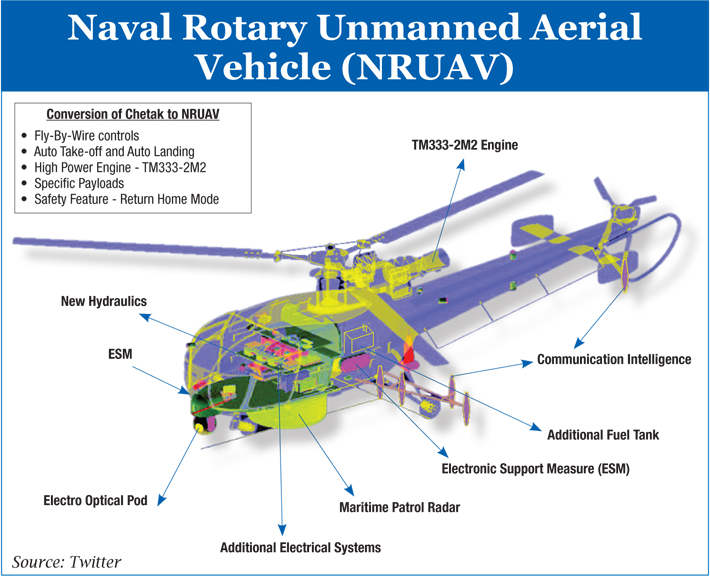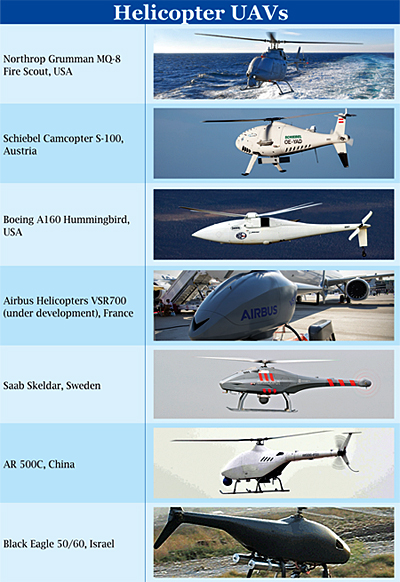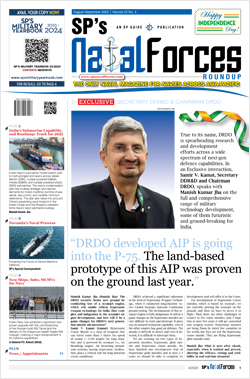INDIAN ARMED FORCES CHIEFS ON OUR RELENTLESS AND FOCUSED PUBLISHING EFFORTS

The insightful articles, inspiring narrations and analytical perspectives presented by the Editorial Team, establish an alluring connect with the reader. My compliments and best wishes to SP Guide Publications.

"Over the past 60 years, the growth of SP Guide Publications has mirrored the rising stature of Indian Navy. Its well-researched and informative magazines on Defence and Aerospace sector have served to shape an educated opinion of our military personnel, policy makers and the public alike. I wish SP's Publication team continued success, fair winds and following seas in all future endeavour!"

Since, its inception in 1964, SP Guide Publications has consistently demonstrated commitment to high-quality journalism in the aerospace and defence sectors, earning a well-deserved reputation as Asia's largest media house in this domain. I wish SP Guide Publications continued success in its pursuit of excellence.
UPGRADES
Converting Cheetah/Chetak as UAV for Ship Operations
With the advancements in drone technologies, there is a large proliferation of drone designers and manufacturers of different sizes and roles in India. There is thus a fair amount of skill set and knowledge available within India alone.
 | Commodore (Dr) R.K. Rana (Retd) |

Introduction
Helicopters have been one of the important assets in the inventory of navy, coast guard ships, offshore support vessels, offshore rigs etc in a marine environment providing ability to quickly look at the situations beyond the visual range. A highly agile and rapidly deployable resource, needing a small footprint to operate onboard ships, because of its ability to vertical take-off and land; move laterally as well as hover. These characteristics have made them very useful in providing aerial observation, reconnaissance, surveillance and fighting capabilities (anti submarine warfare, minesweeping and mine countermeasures); temporary forward listening posts; search and rescue missions; transfer of people and stores; evacuation during medical and other emergencies; disaster management; law enforcements and many more.

Chetak (Alouette III) and Cheetah (LAMA SA 315-B) range of helicopters have been the backbone of Indian Armed Forces, with the first delivery made by Hindustan Aeronautics Ltd. way back in 1965 (Chetak) and in 1976 (Cheetah). Chetaks were built with technology transfer from SUD-AVIATION (former Eurocopter and presently Airbus, France), in 1962 and Cheetah, from SNIAS in 1970.
HAL has till date produced over 350 Chetaks and 275 Cheetahs with Indian Navy’s share of 80 Chetaks. Presently, 51 Chetaks are in operation with Indian Navy.
Though these helicopters have performed well in their prime, their replacements have been planned by all three wings of the armed forces. It is understood that Army and Airfoce combined have given a requirement of 400 helicopters and the Indian Navy is actively pursuing purchase of 111 Naval Utility Helicopters. Though a Government to Government agreement has been signed for 200 Ka-226T Russian helicopters in 2015, certain contractual issues are still being resolved.
Being of vintage and proven designs, a case of converting these light weight (approximately 2 to 2.25 tonnes) Chetaks and Cheetahs to operate as an Unmanned Aerial Vehicles (UAV) needs to be looked into, as it offers many advantages (most important being avoiding putting the pilot and aircrew in harm’s way). The solution to the challenges for shipboard operations will emerge after detailed study, since similar examples do exist globally.
Unmanned Aerial Vehicles
With the advancements in drone technologies, there is a large proliferation of drone designers and manufacturers of different sizes and roles, across the globe and in India. There is thus a fair amount of skill set and knowledge available, be it academia, DRDO, startups, public and private sector industry (numbering more than 500 drone manufacturers) within India alone.
Deep understanding of the following technologies in India, combined with intent, positivity, forward looking approach and support from the top most leadership in the Government of India; an ever growing startup eco system and platform integration capabilities acquired over a period of time are the key drivers for the growth in this sector.
- Structures - Light weight, yet strong and durable metals as well as composites
- Propulsion - Jet engines, Turbofan engines, DC motors, Fuel cells
- Batteries - Li-Ion
- Advanced control algorithms
- Navigation - GPS, Inertial Navigation
- Communications
- Sensors - an electro-optical/infrared sensor/camera, maritime search radar, and communications and electronic intelligence sensors
- New materials - Composites, nano materials
- Additive manufacturing or 3D printing
- Computer vision
- Image processing - normal, thermal and IR footages
- Artificial Intelligence, Deep machine learning
- Robotics
- Terrain mapping
- Swarming
Helicopter UAVs can be operated in manual mode, with an expert piloting the UAV or autonomous mode, programmed to perform a specific task. But today’s technology with manual drone is challenging since it requires heavy pilot training and needs constant attention during the operations; limited support to any outages, unless one has a trained technician/engineer onboard; prone to cyber attack. Global spending on UAVs is likely to reach more than $100 billion in the next decade, with the US government leading the spending.
Global Initiatives
Some of the companies have chosen helicopters as their base platforms for building up UAVs as they find them to be highly maneuverable and ability to fly in constrained spaces, though this maneuverability and versatility comes at the expense of complicated system dynamics and mechanisms.
Some examples of the helicopter based UAVs are as shown in the table.
Indian Initiatives
Development of UAVs started in India with the onset of practice targets (Pilotless Target Aircrafts) by DRDO couple of decades ago, which are the main stay for training of weapons crew of Indian Armed Forces.
Recognising the need and the benefits of UAVs, HAL in collaboration with Israel Aerospace Industries (IAI) Malat had sought to develop helicopter based Naval Rotary UAV (NRUAV) for the Indian Navy, way back in 2008. The aim was to leverage on the strength of an existing and well proven and robust helicopter Chetak, with more powerful Turbomeca TM 333-2M2 engine, replacing Chetak’s avionics with the flight control system from IAI’s Heron UAV.
The system was to have been designed to carry a variety of ISR payloads including SAR, EO, and SIGINT and was aimed to be capable of missions of 6 hours in duration and a range of 120 km from the launching ship. Chetak would have sported ELTA EL/MM-2022 as its multi mission radar payload for detection of small naval targets in high sea states; provided ground moving targets indication (GMTI); strip and spot SAR modes; inverse synthetic aperture radar (ISAR), range signature (RS) and many more features. This project somehow did not take off and was closed in 2017 owing to the technological roadblocks. It is understood that the main reason was IAI’s inability to prove the flight control system to take care of roll and pitch during landing and take-off on a naval ship in rough weather conditions.
The future of military operations seems destined to get fought with machines like drones and other autonomous systems replacing human beings. Faster we adapt ourselves to the changing paradigm, better it will be for India.
It is understood that Aeronautical Development Establishment (ADE) of DRDO has been taken onboard to continue with this project, as is evident from the figure projected during Defexpo. The latest status of the same is not known.
In a fresh push towards ‘Make in India’, HAL, in cooperation with Aeronautical Development Establishment (ADE) of DRDO and IIT Kanpur is coming up with a smaller version (200 kg) of helicopter UAV, Rotary Unmanned Aerial Vehicle (RUAV-200), a full scale model (as shown in the diagram) of which was showcased in Aero India 2019.
Conclusion
The future of military operations seems destined to get fought with machines like drones and other autonomous systems replacing human beings.
Faster we adapt ourselves to the changing paradigm of autonomous control of airspace in naval warfare, better it will be for India.
Government of India and the Indian Armed Forces have already realised this fact and are eagerly inducting such platforms, which is very heartening and the way to go forward to ensure technological superiority. Recent demonstration of indigenous swarming technology on the Army Day parade in Delhi on January 15, 2021 is a case in point.
Converting reliable and proven Chetak/Cheetah helicopters for autonomous operations will provide much needed edge to the Indian Navy and hence it is important to support such programme.





